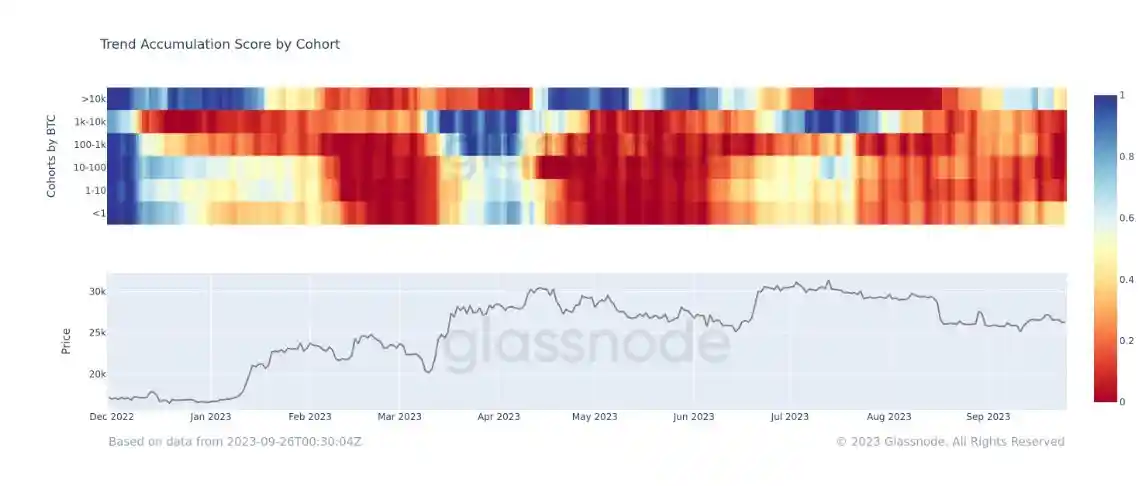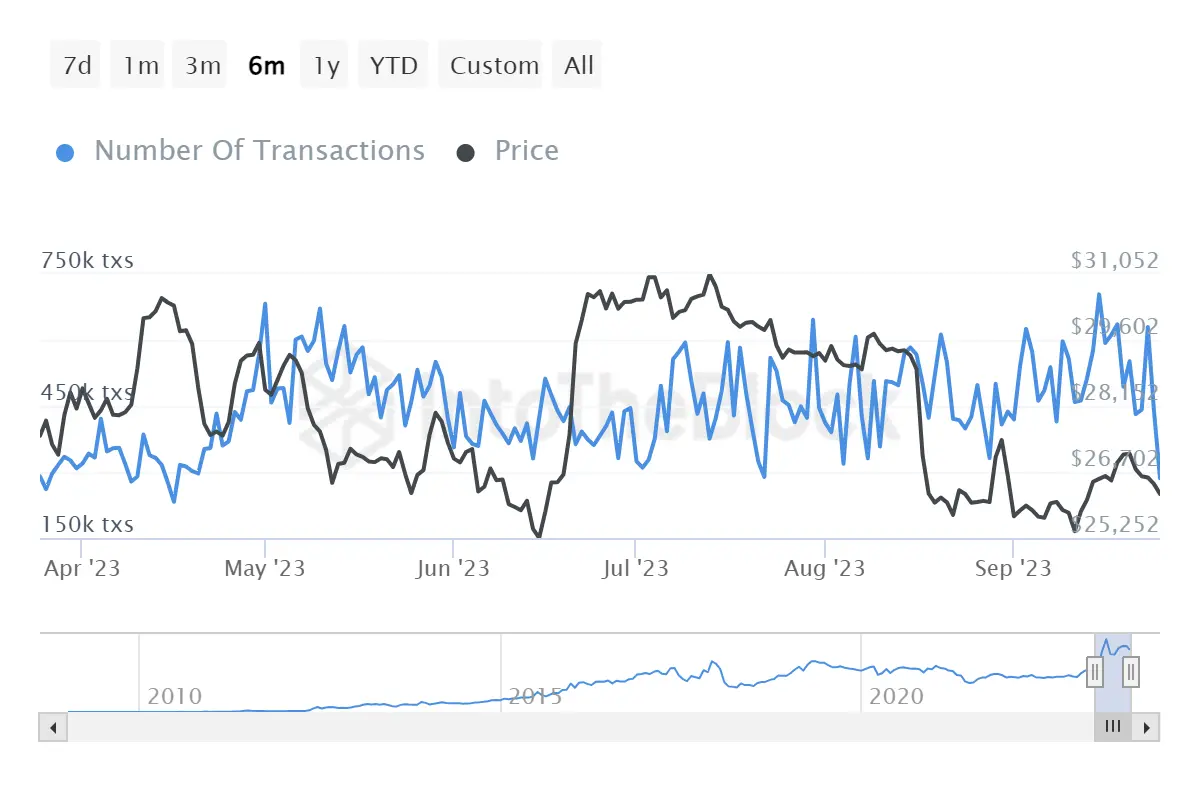- Recent data analysis indicates a significant change in the behavior of Bitcoin whales, referring to large investors holding substantial amounts of Bitcoin.
- Understanding such changes can be a complex process since whale behavior is often influenced by broader market trends and events.
- In addition to whale movements, on-chain signals for Bitcoin are predominantly bearish. Data obtained from IntoTheBlock suggests an overall “mostly bearish” outlook.
Bitcoin whales appear to have halted the accumulation trend: What do Bitcoin’s on-chain signals and daily transaction count on the network tell us?
Bitcoin Whales Might Have Abandoned Accumulation Trend

Recent data analysis indicates a significant change in the behavior of Bitcoin whales, referring to large investors holding substantial amounts of Bitcoin. It appears that these whales have started selling their holdings, abandoning their Bitcoin accumulation strategies, at least for a short period. This is a significant development as they have the potential to influence market trends.
The reported value of accumulated Bitcoin was approximately $25,000, suggesting that whales may be trying to close their positions and convert them into profit. They might be employing a strategy to sell Bitcoin at high prices, taking advantage of market conditions, and potentially buy back at lower prices in the event of a future market downturn.
However, understanding this behavior requires considering not only the Bitcoin movements of these whales but also the broader context of cryptocurrency markets, including general fluctuations and other major economic factors. Since whale behavior is often influenced by broader market trends and events, comprehending such changes can be a complex process.

On-Chain Signals for Bitcoin
In addition to whale movements, on-chain signals for Bitcoin are predominantly bearish. Data obtained from IntoTheBlock indicates that the overall outlook is “mostly bearish,” as shown in the visual below. Exchange and derivatives signals, on the other hand, remain neutral.

In addition to these on-chain signals, Bitcoin transfers are at their lowest levels since April as of the time of writing. Daily Bitcoin transactions were recorded at 285,000. Although today’s transactions are not yet completed, this number remains at its lowest since April 16.

The decrease in Bitcoin transactions suggests reduced activity on the network. These data are based on what is recorded on the blockchain, so transactions conducted on exchanges are not recorded unless they occur on the blockchain.
While this indicator tends to move in correlation with the price of Bitcoin’s daily active addresses, the difference between the two suggests less speculative use and more organic usage for the fundamental cryptocurrency.
